
views
- Decant wine before serving to separate out sediment and let it breathe.
- Pour wine slowly into a decanter or carafe, keeping an eye on the neck of the bottle so no sediment flows into the container.
- Let most wines decant for about 30 minutes. Decant very old, delicate, or light-bodied wines immediately before serving.
What is decanting?

Decanting is the gradual pouring of a liquid from one vessel to another. When you decant wine, you usually pour it from its bottle into a glass serving container like a decanter or a carafe. This is for 2 main reasons—to separate the wine from sediment that has formed at the bottom of the bottle (especially in older red wines) and to aerate the wine to enhance its flavor and aroma. Any wine can be decanted. It’s best for young, fine wines that need aeration to open up and older (5 years or more) wines that have formed sediment. Most decanters have a wide mouth to expose the wine to oxygen quickly. Oxygen is the main catalyst for the maturation of the wine. Sediment forms when the tannins and color of a wine break down over time and clump together. The sediment can be powdery, sandy, or even slimy.
When is decanting necessary?
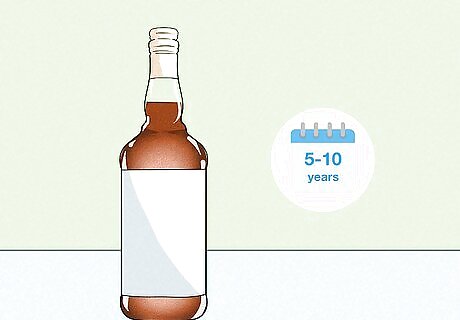
In general, wines older than 5 to 10 years need decanting. Most red wines over 5 years old begin to develop sediment, so decanting is needed to separate out the wine. Almost all wines (reds and whites) over 20 years old accumulate sediment as well, but are also more reactive to the air—in this case, decanting with a small vessel will remove sediment and control aeration. Young fine wines (reds and whites) need decanting, especially if they’re high in tannins. The aeration opens up their complex flavors and aromas. Decant any wine if you don’t like the taste. Wine that’s unbalanced, too acidic, or that smells vinegar-y can open up and mellow out in a decanter. Decant natural wines, including whites and rosés, because they’re more prone to acidity and reduction as they age.
The Decanting Process
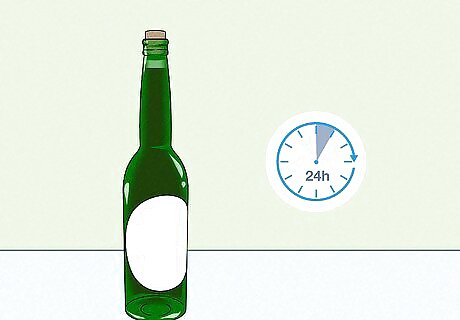
Sit your wine bottle upright 24 hours before serving. This gives any sediment time to settle at the bottom of the bottle, especially if the bottle was stored on its side or it was shaken around recently. When the sediment is collected at the bottom, it’s easier to separate while pouring.
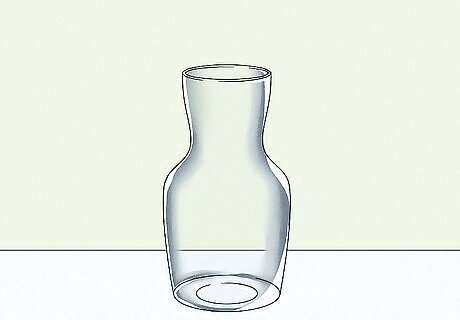
Grab a decanter and wash it while the wine sits. The decanter will be the vessel you pour and serve from, so make sure it’s clean and easy to pour from. You can even use a carafe or a mason jar—anything that allows the wine to breathe will work! If you’re decanting old and delicate wine, use a decanter with a smaller cradle (the less surface area the wine has, the slower it will aerate). Decant young, bold wines in vessels with large cradles to expose more wine to the air. Choose a clear decanter so you can see and admire the color of the wine. It doesn’t have to be clear, but it adds a nice touch.

Uncork your bottle and wipe the neck clean. Use a cloth to remove any spots on the bottle neck so that you can see through the glass with no obstructions (this will help you spot sediment as you pour). If there’s foil around the neck, peel it away so the glass is exposed. If the cork broke when you opened the bottle and there are small bits in the wine, use a sieve or filtered funnel when you pour the wine into the decanter.

Set a candle or flashlight next to the decanter. The small light will illuminate the neck of your wine bottle while you pour so that you can see sediment creeping into the neck. Candles are traditional, but a small electric light or a flashlight with the light facing upwards will work, too.
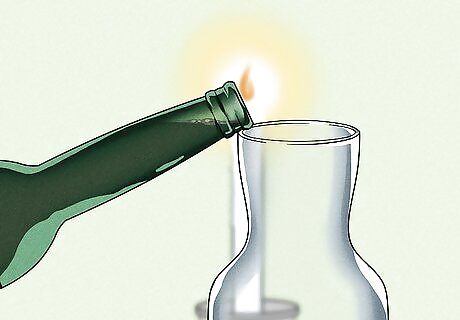
Rest the neck of the bottle on the lip of the decanter over the light. Make sure the bottle stays about 6 inches (15 cm) away from your candle or light (otherwise you’ll end up with some warm wine). Keep the bottom of the bottle low to avoid rustling up the sediment.
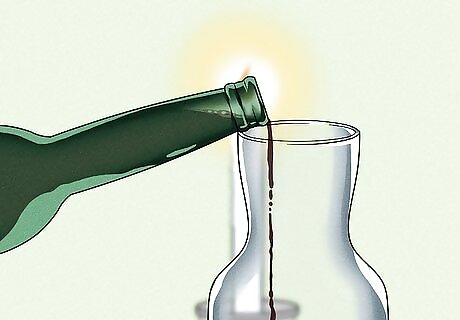
Pour the wine slowly into the decanter. Maintain a steady and smooth pour by slowly raising the bottom of the bottle. Once the bottle is about half empty, slow your pour even more (this reduces the chance of accidentally dumping sediment into the decanter).
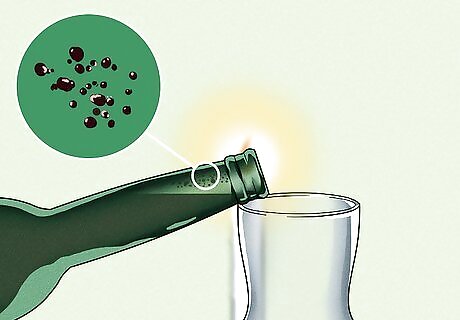
Stop pouring once you see sediment in the neck of the bottle. You’ll probably have about an ounce of wine left in the bottle at this point. Wine sediment can look like chunks, grains, or flakes of solid material. Sometimes, you’ll see the wine turn cloudy instead of seeing particles. Discard the remaining bit of wine left in the bottle. If you think you can salvage the last of the wine, stand the bottle up again and let the sediment settle before slowly pouring into the decanter again.

Store leftover wine in the decanter to finish within 2 days. Simply put an airtight lid or stopper on the decanter to seal it and stop aeration, preferably within 18 hours. If it’ll take you longer to finish, pour the wine back into the bottle and use a wine bottle vacuum pump to remove the air and seal it. Store previously opened wine at a cool temperature to slow down its reaction to oxygen in the air.
How long should I decant my wine?
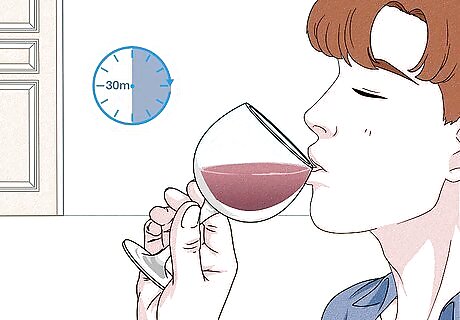
Most wines benefit from about 30 minutes of decanting. The most important factor in how long you decant is your personal preference for the taste. The longer the wine aerates, the softer its tannins become (this makes for a smooth, complex flavor). Take a sip of your wine every 20 to 30 minutes to test it, and serve it when it reaches your preferred taste. Decant old, delicate wines immediately before serving. They’ve aged enough in the bottle, so too much oxygen exposure might change the taste. Everyday white wines and rosés don’t need decanting—just swirl the wine around in your glass for a few seconds before drinking. High-end whites benefit most from decanting. Champagne and sparkling wines lose some of their bubbliness when they’re decanted. Decant them if you want more flavor and less fizz. Light-bodied reds, like pinot noir, don’t need long in a decanter. Decant full-bodied reds, especially young ones, for 20 minutes to an hour.



















Comments
0 comment